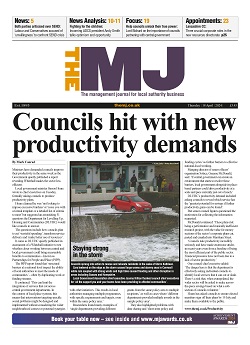Over the last decade, Hackney has made a long-term investment in developing its data analytics capability, clear in the belief that effective use of data is critical to delivering excellent services for our residents and businesses.
As part of this we place a high value on data standards and master data management as the foundations for linking data to allow us to provide a more holistic view of the needs of our residents.
In this context, with lockdown looming, the council was in a good position to move quickly to create a data model and summary analysis which was designed to estimate just how many people in Hackney could be vulnerable to either the clinical or economic impacts of COVID-19. For example, if a person in the household had been advised to shield or had a known health condition or disability.
Data was linked across systems using UPRNs (Unique Property Reference Numbers) from our master address database, providing us with a live, customisable view of where and how many residents might be in need of support. For the most part, this work was then presented in Qlik, our business intelligence software, either as summary statistics or more detailed information for services to base decisions on.
In the immediate aftermath of lockdown, this work has delivered further value in helping us direct our efforts to support the most vulnerable in the borough without duplication of effort – for example, by looking for opportunities for our housing officers to check in with shielding residents known to adult social care, which has allowed us to support vulnerable residents while spreading the workload across departments and ensuring that residents were not receiving multiple calls.
Over the last four months, our initial data model has proved to be invaluable and has been the basis for significant amounts of bespoke analysis as we have augmented it with additional information. We used the model to support colleagues looking to prioritise getting children in temporary accommodation back to school quickly and, as we moved away from direct food provision by the council, we queried the data to identify residents facing food poverty who would benefit most from a referral to our local food banks.
We are now beginning work to revisit our analysis to understand how accurate it was now that more information about the impacts of COVID-19 is available and how we can continue to track the impacts locally.
Coronavirus isn’t going away and we remain concerned that beyond the continuing immediate health risks to our diverse population, there is a ticking time bomb of economic hardship which could undermine the great progress we have made in Hackney over the last 20-plus years in supporting some of our most disadvantaged residents and working to build an inclusive economy where the benefits of Hackney’s transformation are shared with all.
One of the most obvious lessons for us is the value of making work reusable. We were able to be quick off the mark with this work because we had already put UPRNs at the heart of our data analytics approach.
In autumn 2019, the team developed a data model as part of a data science project looking to predict households where a household of multiple occupation licence was likely to be required. This laid the important foundations by creating a household dataset for all residential properties in the borough, to which we added additional ‘flags’ telling us about the characteristics of that household.
We reused this model and tweaked it to meet our COVID-19 needs – following exactly the same approach but adding bespoke datasets that could help us understand different vulnerabilities.
This approach to master data management and our previous projects meant we could move much more quickly and with much greater confidence than would otherwise have been the case.
Encouraging reuse has also been at the heart of the many conversations we have had with other local authorities in recent months. It is easy to fall into the trap of thinking all councils should be able to pick up and reuse a model of this kind.
In practice, while the concepts are transferable, we all work in such different ways with such diverse populations and local needs that it is rarely simple to reuse work done elsewhere in its entirety.
Our conversations with colleagues have also reminded us how lucky we are in Hackney to have the skills and tools to allow us to do this work quickly, with a supportive senior leadership team and Cabinet who are open to us sharing data internally to unlock insights on how we can best to support our residents.
As we move forward and evolve our data model we will be incorporating what we have learned from these conversations with other councils. In particular, the definition of a ‘vulnerable resident’ is not fixed and we have had very constructive challenges from colleagues in other authorities to think differently on this and we are keen to make sure our analysis keeps pace with that thinking.
We hope to continue the conversation as we do this and by sharing our work openly we hope we can assist similar work in other local areas and benefit from the insight that others share with us in response.
Liz Harrison is data and insight manager at Hackney LBC



